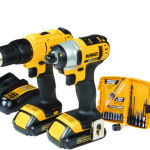Your brand-new piece of heavy equipment has just been delivered to your loading dock. You are overjoyed but then wonder to yourself, “How did it get here?”
Transportation is a big job in delivery, especially on a piece of equipment this big. Getting it to the right place at the right place can be complicated, and it is easy to make mistakes. How can you avoid that?
Read on to learn about common heavy equipment shipping errors and how to avoid them.
1. Inaccurate Weight and Size Measurements
Properly assessing the weight and size of the equipment is key to ensuring a smooth equipment shipping process. When making accurate weight and size measurements, considering the entire package (crates, pallets, containers, loaders, etc.) is essential.
Furthermore, one should consider the weight of fluids in the heavy equipment. This is most important, especially in transporting a loader. Neglecting to do so can easily lead to an incorrect size estimation and a shipment that is too large or heavy for the appropriate shipping method.
2. Inadequate Packaging
Inadequate packaging is one such error that can be easily avoided. When packaging any type of equipment, one should ensure that the item is surrounded by a thick layer of foam or padding and further protected by a robust corrugated box or crate. This will help shield the item from shock, dirt, and moisture during transit.
Any small components should also be removed from the equipment and placed in separate plastic bags before being packed. To reduce havoc during transport, the box should be adequately sealed with multiple layers of tape and clearly labeled with the sender and receiver’s information.
3. Incorrect Loading and Unloading
Incorrect loading and unloading can cause safety issues in addition to substantial financial losses. In order to minimize risks associated with these shipping errors, precautions such as using the correct lifting and moving equipment and ensuring that the equipment is properly secured once loaded are essential for preventing accidents and saving money.
Furthermore, qualified personnel are all recommended for loading and unloading the items and inspecting them for potential damage. Finally, verifying the shipping address is correct before dispatch can help avoid delays, wrong delivery, and other potential problems.
4. Poor Communication
It’s critical that the shipper and the receiving party are on the same page and that adequate communication is achieved throughout the shipment. The shipper should provide clear information about the weight and size of the item to be shipped, as well as any special requirements necessary for the shipment.
Additionally, the shipper should inform the receiver of any expected delays or changes to the shipment schedule, the estimated arrival time, and any additional fees or charges associated with the shipment. For shipments to international locations, the shipper must ensure that foreign customs clearance is obtained before shipping.
Regular communication and updates between the shipper and the receiver are the best way to avoid errors when shipping heavy equipment and ensure the safe delivery of the item.
Heavy Equipment Shipping Errors To Avoid
Continuous communication and inspection are essential to reducing the chance of errors when shipping heavy equipment. Equip shippers with the right tools and resources to avoid costly mistakes. Always employ a dependable and experienced team of professionals to handle and input into the heavy equipment shipping process.
Taking the time to address these heavy equipment shipping errors properly will save time and money in the long run. Take the first step today. Start shipping equipment responsibly!
Read through some of our other articles on this subject and other topics of interest. You’ll be glad that you did.















